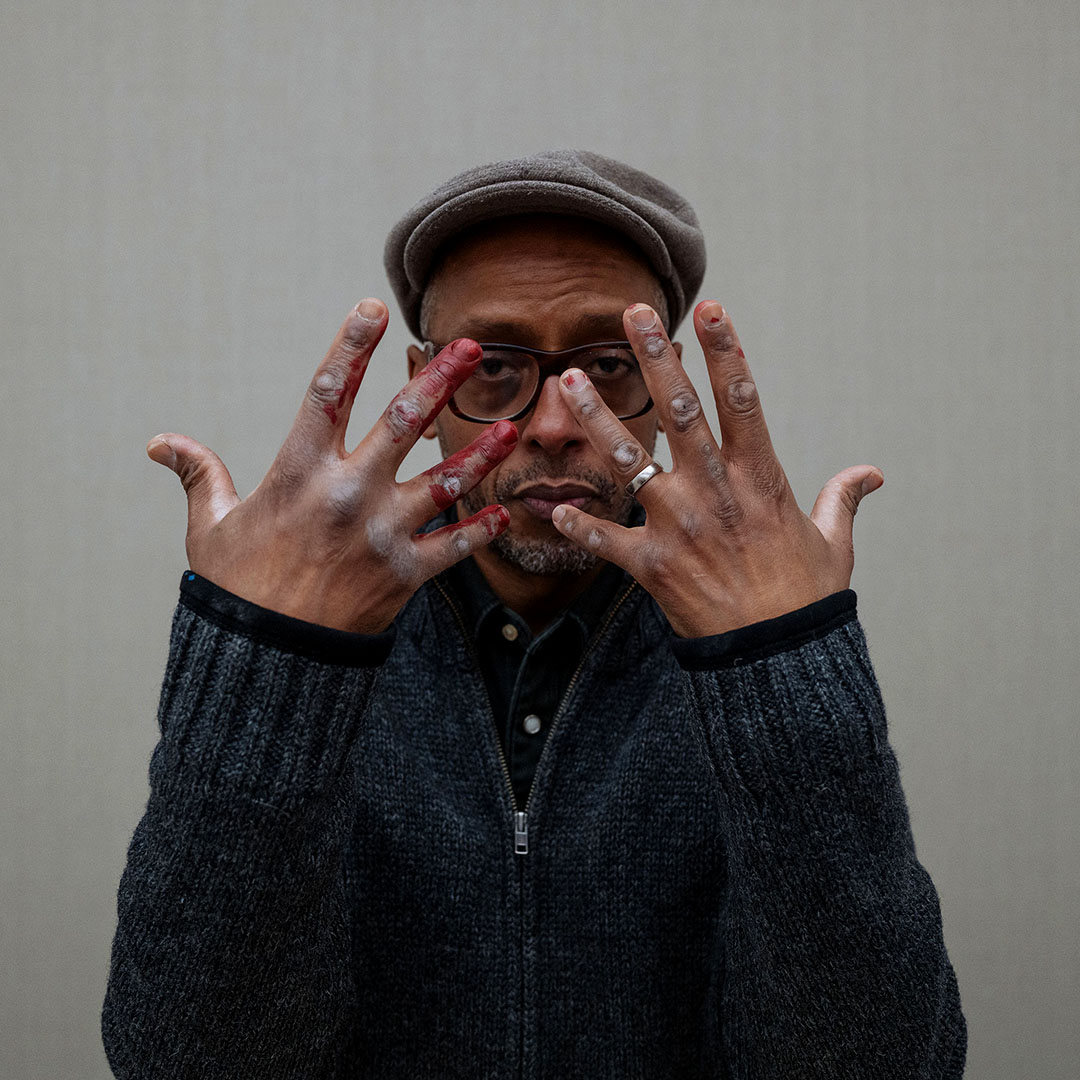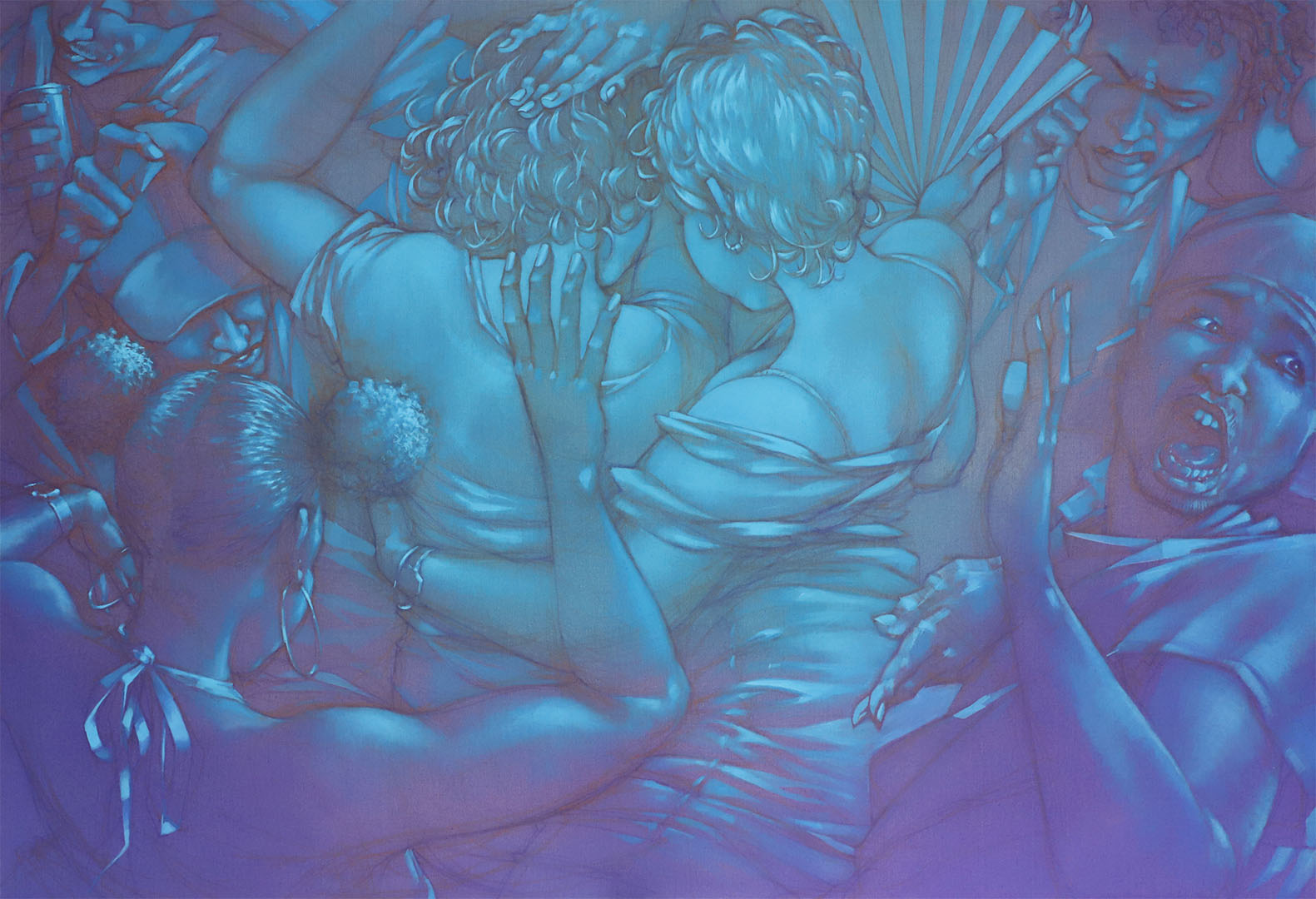MODE 2
(Mauritian, 1967)
Born in Mauritius in 1967, before arriving in London on a hot July day of 1976, Mode 2 spent his childhood immersed in different cultures; beginning with those of his native land, the punk, dub and pop of the late seventies, comics, heroic fantasy and science-fiction literature, or role-playing games, painting lead figurines and winning national competitions through this, or even joining The Tolkien Society.
Films such as Star Wars, Blade Runner, the first cartoon version of The Lord Of The Rings, also enriched his childhood.
Becoming an active member of the Covent Garden Hip Hop scene from the spring of 1984, he never left the culture, adhering to what he saw as an alchemy of forms of artistic expression that would never again be repeated. The successive collisions and synergy between the different art forms inspire him til this day.
Mode 2 began hopping school in 1985, taking trips to Paris to paint alongside European pioneer Bando, while revelling in what the whole culture had to offer; travelling to Copenhagen and Stockholm the following year, in an era where each city across Europe developed its own scene with whatever its community had to improvise and build with.
The cover of Spraycan Art in 1987 brought him international fame, and greatly influenced the style of many who wished to add characters to their pieces from there on; while Mode himself strived to remain true to the art of developing letters in his own way, though never hiding the New York predecessors and traditions that inspired him.
Bringing every aspect of his own life into what he does, some of his pieces had political, socio-economic or environmental themes affecting his everyday life; something he developed further as he began doing more work in the studio from the mid-nineties onwards. That said, the music and the dance always remained a principal dimension to what he did, and he championed the way in which these two other disciplines remained unexplored by the vast majority of figurative artists; while pointing out the important role of music and dance with regards to neurological and cognitive development on one side… while bringing people of all backgrounds to celebrate together on the dance floor, expressing their individuality in an atmosphere of harmony and cultural osmosis.
Mode 2 remains very selective of the shows and events he is invited to participate in, or with regards to potential clients commissioning him for jobs; as he believes that this polyculture must retain its autonomy, and must never go less than 51% in its relationship with the entertainment industry, commercial work in general, and an art market that he views as being more or a colonial endeavour by political, financial and cultural elites.
If this culture was able to reinvent music, dance, visual art, along with the written and spoken word, he believes; then why not reinvent culture itself, along with politics and parallel economies which feed back into the culture itself, instead of aspiring to mimic the symbols of success portrayed by a society that this culture was a direct reaction against, at its outset?
We all have our public and private lives, he believes, similar to the dual identities of graffiti-writers.
Invited to Hip Hop jams as a performer and guest-speaker in the nineties, Mode 2 has held this role ever since, participating in major international events such as “Hip Hop; A Cultural Experience” in Cleveland Ohio, September 1999, “Art In The Streets” at the MoCA in Los Angeles in April 2011, co-curating “The Bridges Of Graffiti” at the Venice Biennale in 2015, or “Beyond The Streets” this past February at the Saatchi Gallery in London.
He is also a keen historian of the culture, with his own extensive photo archives, and an obsession for remembering dates; a culture that cannot document its own history or forgetting its roots ceasing to be one, he believes…



